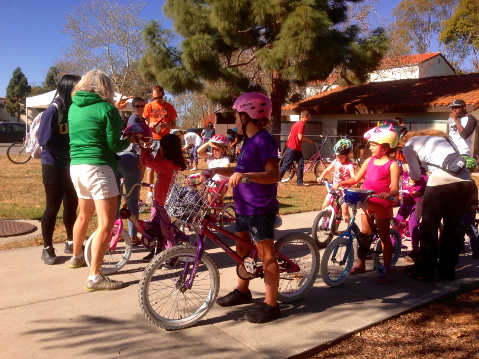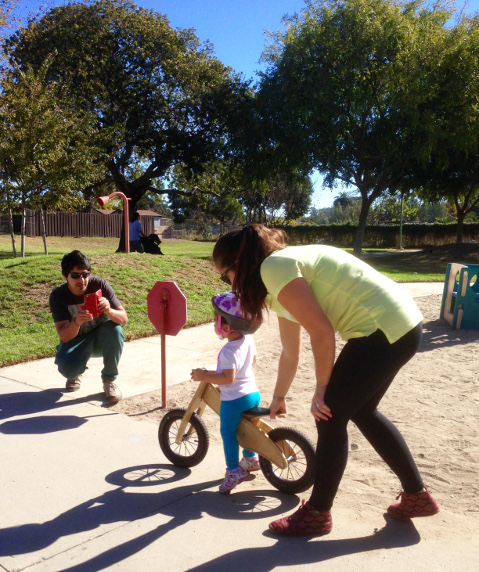Living Through Learning to Pedal
The Pain and Joy of Learning to Mount, Ride, and Dismount

Mark Twain said it best, “Get a bicycle. You will not regret it if you live.” He describes the life-changing experience of learning to ride a high-wheeled bicycle in the humorous essay Taming the Bike.
Twain tells about the pain and joy of learning to mount, ride, and dismount a bicycle. For him, dismounting is by far the easiest part. “Mine was not a full-grown bicycle, but only a colt — a fifty-inch, with the pedals shortened up to forty-eight — and skittish, like any other colt. The Expert explained the thing’s points briefly, then he got on its back and rode around a little, to show me how easy it was to do. He said that the dismounting was perhaps the hardest thing to learn, and so we would leave that to the last. But he was in error there. He found, to his surprise and joy, that all that he needed to do was to get me on to the machine and stand out of the way; I could get off, myself. Although I was wholly inexperienced, I dismounted in the best time on record. He was on that side, shoving up the machine; we all came down with a crash, he at the bottom, I next, and the machine on top.”
Of all our childhood adventures, learning to ride a bicycle is one of the most memorable. For children, it’s often their first taste of independence and their first experience with self-reliance. As they learn to pedal and go faster and farther, they feel powerful and free. It’s these emotions that shape their personality and instill confidence in them for years to come.
Ask any cyclist, “Who taught you?” or “Tell me about when you learned to ride a bike?” and you will hear a nostalgic heartfelt story about the hours spent with one of their parents and a Schwinn, Huffy, or Mongoose on their childhood streets. Learning to ride a bike is for many children is one of their earliest vivid memories. When we teach our children the basics of riding a bike, we are also teaching them life lessons that prepare them for adulthood.
As you encourage your child to ride a bike, think back to your own childhood bicycle experiences and relive those lessons from the past. Here are five simple DIY tips for helping your child learn how to ride a bicycle:
Step 1: The best way of teaching a child to ride a bicycle emphasizes balance first and adds pedaling later. Balance bikes are built for this approach, but it’s easy to modify a regular child’s bike by lowering the seat and removing training wheels and pedals. Have your child begin by scooting on the modified bike so that they can get the feel of balancing it. Once they are comfortable scooting, kids will pick up their feet and coast.

Step 2: After learning to scoot, turning and steering are next. Start with big, easy, looping turns. Once your child can coast the bike with feet up, make turns while coasting, and look ahead while riding, it’s time to put the pedals back on the bike. For now, keep the seat in its lowered position so your child can put both feet on the ground to stop.
Step 3: Next, teach your child how to start from a stopped position. Have your child stand over the bike with one foot flat on the ground and the other on a pedal at the 2 o’clock position. Coach your child to press down on the front pedal. Like the scooting action he or she’s already mastered, this pressure will give the bike its forward momentum. Steady your child as he or she moves forward by placing a hand on a shoulder or the bike saddle — but let the child learn how to balance and feel comfortable on the bike without assistance.
Step 4: As kids get the hang of pedaling a bike, they can start practicing turns. Encourage your child to do large circles and figure 8s. Keep things fun by making a game out of steering and turning.
Step 5: The final step is stopping. Have your child practice gently pressing on the coaster brake until he or she can use it without wobbling very much. As your child becomes comfortable with braking, you can raise the saddle back to its usual height.
Once your child can ride fairly easily, get on your bike and have him or her follow you. Take it slow and easy, and make big turns every now and then. Focus on balance and have a slowness race where the last person to put their feet on the ground wins. Remember to stop and rest when tired, and have fun!
Most of us, as adults, use our bike skills to ride for daily transportation or pleasure. Some cyclists take biking to the next level by becoming bike messengers or racing at amateur or professional levels. Some go way above category. Here are some short videos of cyclists who have taken those lessons of freedom, independence, and riding for life to the maximum. Their bike skills are far beyond my own. Most days I’m just happy to keep the rubber side down. In fact, I’m closer to being Mark Twain than the Expert. Take a few minutes and admire how Danny MacAskill or the Bike Parkour cyclists make bicycles soar. But, don’t try this at home.
If you need some Expert advice or support to help your child learn to ride a bike check out events held by COAST or the Santa Barbara Bicycle Coalition. Finally, remember that as Twain says, “Try as you may, you don’t get down as you would from a horse, you get down as you would from a house afire. You make a spectacle of yourself every time.”
Have fun pedaling with your kids!



